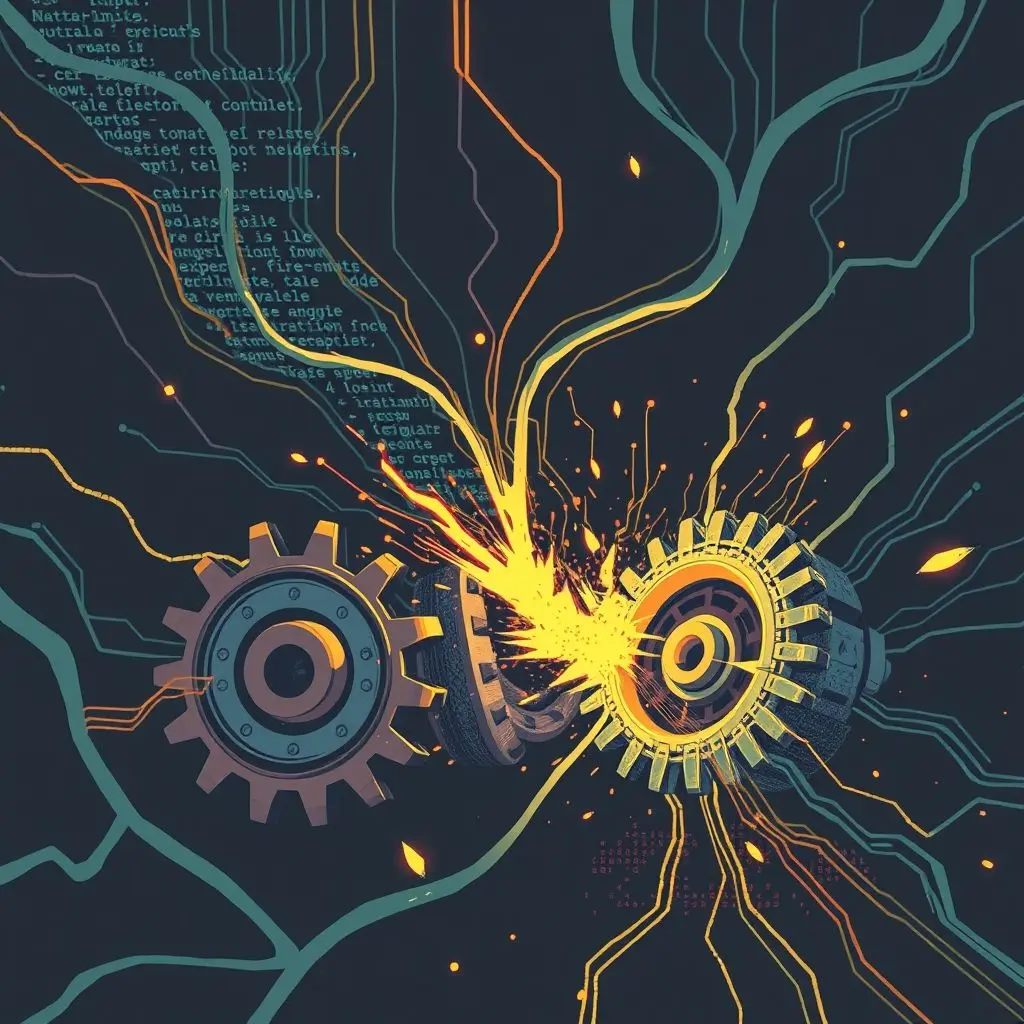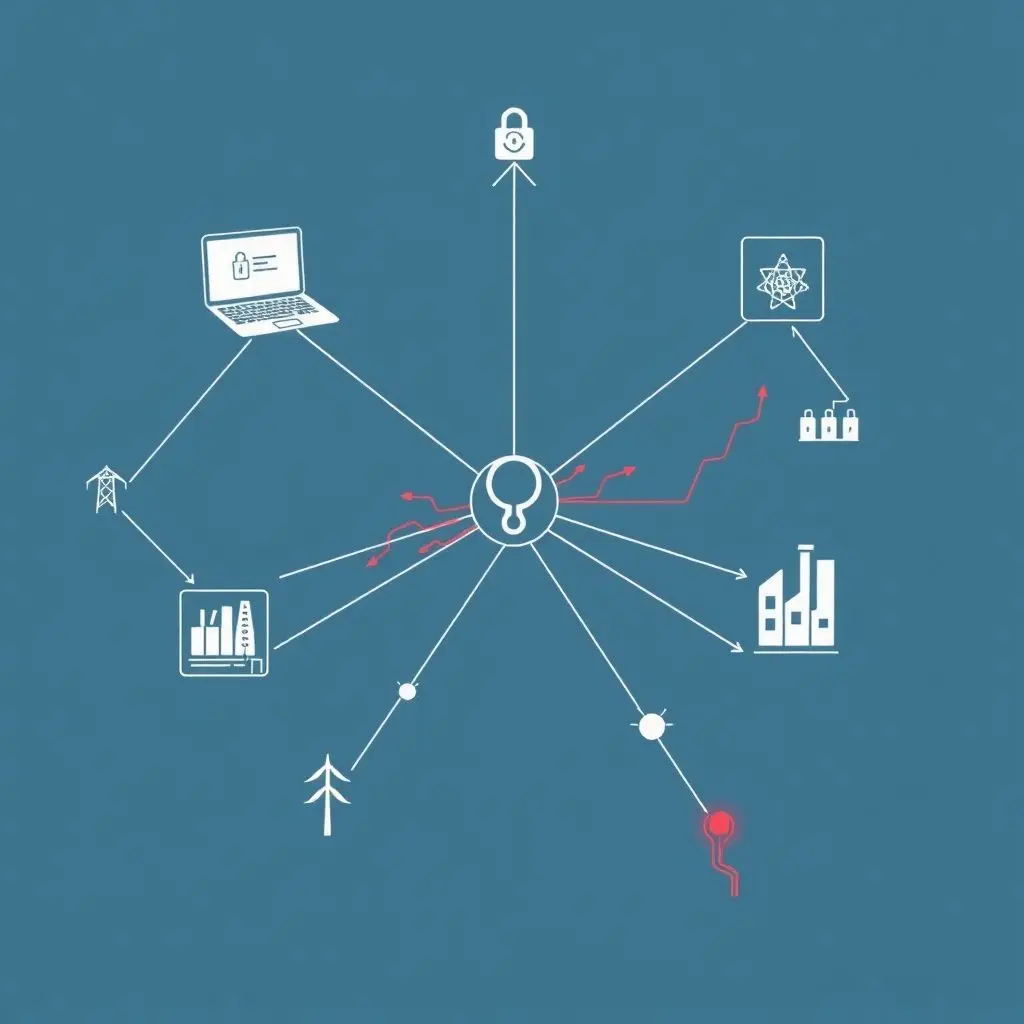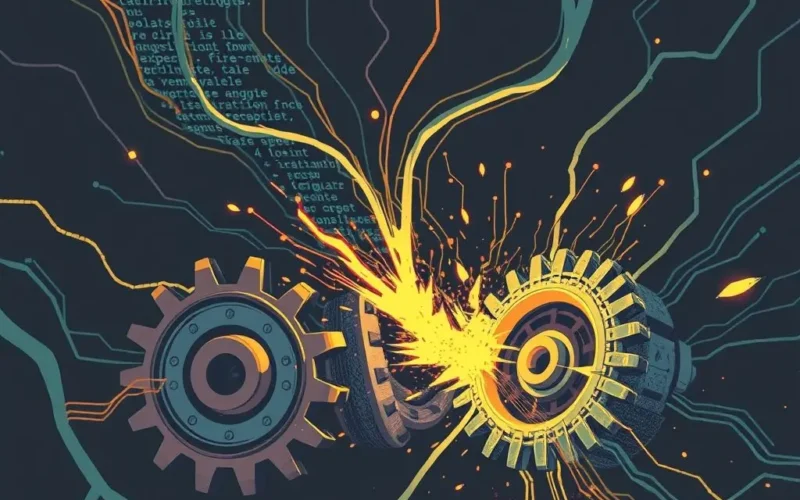Imagine for a moment a threat far more insidious than identity theft or a crashed hard drive. Picture a computer virus so sophisticated, so precisely engineered, that it didn’t merely disrupt digital systems – it leaped across the digital divide to inflict tangible, physical destruction on real-world machinery. This isn’t science fiction; it’s the chilling reality unveiled by a complex piece of malicious code known as Stuxnet.
Surfacing around 2010, Stuxnet wasn’t designed to steal your credit card numbers or flood your inbox with spam. Its mission was far more ambitious, targeting specific industrial control systems within Iran’s nuclear program. The goal? To disrupt and potentially dismantle the infrastructure used for enriching uranium, specifically the high-speed centrifuges vital to the process.
While we’re about to delve deep into the mechanics and implications of this groundbreaking attack, sometimes a quick visual primer can set the stage perfectly. Take a moment to watch this short video which captures the essence of Stuxnet’s audacious nature:
Table of Contents
The Invisible Assassin Targeting Atoms
Before Stuxnet, cyberattacks primarily focused on data – stealing it, deleting it, or holding it hostage. Stuxnet shattered this paradigm. It demonstrated that code could be crafted into a precision weapon capable of causing physical damage, blurring the lines between cyber and kinetic warfare in an unprecedented way.
Its primary target was the Natanz fuel enrichment plant in Iran. This facility housed thousands of centrifuges – delicate machines that spin at incredibly high speeds (tens of thousands of RPM) to separate fissile uranium-235 isotopes from the more common uranium-238. The stable operation of these centrifuges requires meticulous control over their rotation speed and frequency, managed by industrial control systems, specifically Programmable Logic Controllers (PLCs).

How Stuxnet Worked Its Mechanical Mayhem
Stuxnet was not a simple virus. It was a complex, multi-stage malware program utilizing several zero-day vulnerabilities (previously unknown software flaws) to infiltrate highly secured networks. Here’s a simplified breakdown of its modus operandi:
Infection and Spread: Unlike most malware that spreads via email or websites, Stuxnet primarily spread through infected USB drives. This allowed it to jump the “air gap” – the physical isolation of critical industrial networks from the internet. Once inside a network, it used network vulnerabilities to propagate further.
Target Identification: Stuxnet wasn’t indiscriminate. It was programmed to seek out specific configurations of Siemens industrial control systems (PCS 7, Step 7) and specific hardware components, like frequency converter drives used to control motor speeds (likely Vacon and Farrokh frequency converters, according to researchers).
Stealth and Subterfuge: This was perhaps Stuxnet’s most brilliant aspect. It included a rootkit component that hid its presence on the infected system. Crucially, it could inject code into the PLCs that commanded the centrifuges. Instead of just crashing the system, Stuxnet would subtly alter the instructions sent to the frequency converters, causing the centrifuges to spin at dangerously high speeds for short bursts, then drop to dangerously low speeds, repeating this cycle.
Deception (The “Man-in-the-Middle”): To prevent operators from noticing the erratic behavior, Stuxnet also manipulated the data feedback loops. It recorded normal operating parameters for the centrifuges and played this ‘normal’ data back to the control room displays, effectively showing operators that everything was fine, while the machines themselves were tearing themselves apart from the inside due to the extreme stress of speed fluctuations.
Physical Destruction: The repeated, violent speed variations put immense strain on the centrifuges’ bearings, rotors, and vacuum seals. Over time, this stress would lead to mechanical failure, causing centrifuges to break down, often catastrophically.
Estimates vary, but some reports suggest Stuxnet may have destroyed close to a thousand centrifuges at Natanz before it was fully neutralized. This wasn’t just downtime; it was the physical ruination of expensive, specialized equipment.

The Discovery and The Fingerprints
Stuxnet was accidentally discovered in 2010 by a security firm in Belarus after an Iranian facility requested help dealing with unusual computer problems. Once uncovered, security researchers globally reverse-engineered the malware, revealing its unprecedented complexity and specific targeting.
The level of sophistication, the resources required, the use of multiple zero-day vulnerabilities (reportedly four or five), and the highly specific industrial target strongly suggested state-sponsored origin. While no government has officially claimed responsibility, the consensus among cybersecurity experts and investigative journalists points towards the United States and Israel as the likely architects, reportedly part of a covert operation known as ‘Operation Olympic Games’, aimed at slowing down Iran’s nuclear program through sabotage.
Stuxnet’s Enduring Legacy: Cyber Warfare Redefined
Stuxnet wasn’t just another virus; it was a watershed moment. It proved:
- Code is a Kinetic Force: It demonstrated that malware could be designed to produce tangible, real-world physical effects.
- Industrial Systems are Vulnerable: It highlighted the critical security gaps in Supervisory Control and Data Acquisition (SCADA) and Industrial Control Systems (ICS) that manage critical infrastructure like power grids, water treatment plants, manufacturing facilities, and transportation networks.
- The Rise of Digital Weapons: It ushered in an era where cyber capabilities became a significant component of state power and military strategy, moving beyond espionage to active sabotage.
- The Challenge of Attribution: Despite strong indications, definitive proof of state-sponsored attacks remains incredibly difficult to obtain, complicating international relations and response protocols.
The world woke up to a new category of threat. Critical infrastructure operators had to rethink their security postures entirely. Cybersecurity researchers began focusing heavily on ICS/SCADA security, a field that was previously relatively niche.

Lessons Learned (Hopefully)
Stuxnet served as a stark, undeniable warning. The same vulnerabilities exploited to damage centrifuges could, in theory, be adapted to disrupt power grids, cripple transportation networks, or contaminate water supplies.
Since 2010, there’s been a significant, though perhaps still insufficient, push to improve the cybersecurity of industrial systems. Measures include:
- Implementing stricter network segmentation.
- Improving patch management for critical software and hardware.
- Enhancing monitoring and detection capabilities specific to ICS environments.
- Developing better protocols for secure remote access.
- Training personnel on social engineering threats (like infected USBs).
However, the challenges remain immense, given the complexity, legacy systems, and often continuous operation requirements of industrial environments.
Frequently Asked Questions About Stuxnet
Got more questions about this remarkable piece of malware? Here are some common ones:
Q: Was Stuxnet the first cyber weapon?
A: While arguably not the absolute first instance of code used maliciously by a state (there were precedents like Moonlight Maze or Titan Rain focusing on espionage), Stuxnet was the first widely documented case of a complex cyber operation designed *explicitly* to cause *physical destruction* on an industrial scale. This made it uniquely significant as a ‘kinetic cyber weapon’.
Q: How did Stuxnet get onto the network if it was air-gapped?
A: The most common and widely accepted theory is that it was introduced via infected USB drives carried by unsuspecting individuals (or possibly insiders) who had access to the facility. The malware was designed to automatically execute and spread once the drive was plugged into a Windows computer within the targeted network.
Q: Could Stuxnet spread beyond its intended target?
A: Yes, Stuxnet did spread beyond Iran and the targeted facilities. It was found in various countries, though without the specific Siemens PLC and frequency converter configuration it sought, it remained largely dormant or ineffective at causing physical damage in those other environments. Its spread outside Iran is how it was eventually discovered.
Q: Was Stuxnet successful?
A: From the perspective of its likely creators, it is generally considered successful in its immediate goal of significantly disrupting and slowing down Iran’s uranium enrichment process for a period, without requiring a military strike. However, it also inadvertently revealed sophisticated cyber warfare capabilities to the world, potentially accelerating the development of similar weapons by other nations.
Q: Are industrial systems still vulnerable to Stuxnet-like attacks?
A: While awareness and security measures have improved since 2010, industrial systems, especially older ones or those with inadequate segmentation and monitoring, remain attractive targets. New vulnerabilities are constantly discovered, and the threat landscape for critical infrastructure is considered high.
The Digital Ghost in the Machine
The tale of Stuxnet is a powerful reminder that the lines between the digital and physical worlds are increasingly blurred. Code is no longer confined to screens; it can reach out and manipulate the mechanical heartbeats of our industrial world. The ‘digital ghost in the machine’ that once lurked in the shadows of Iran’s nuclear facilities has shown the world that the next major conflict might not start with missiles or bombs, but with bytes and code, capable of inflicting damage just as real, just as devastating.
Understanding Stuxnet is crucial not just for cybersecurity professionals, but for anyone living in a world increasingly reliant on interconnected industrial systems. It serves as both a historical case study and a chilling preview of the potential future of conflict.





